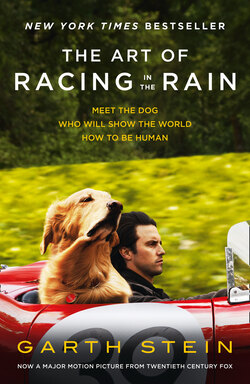Читать книгу The Art of Racing in the Rain - Garth Stein - Страница 17
Оглавление10
Ideally, a driver is a master of all that is around him, Denny says. Ideally, a driver controls the car so completely that he corrects a spin before it happens, he anticipates all possibilities. But we don’t live in an ideal world. In our world, surprises sometimes happen, mistakes happen, incidents with other drivers happen, and a driver must react.
When a driver reacts, Denny says, it’s important to remember that a car is only as good as its tires. If the tires lose traction, nothing else matters. Horsepower, torque, braking. All is moot when a skid is initiated. Until speed is scrubbed by good, old-fashioned friction and the tires regain traction, the driver is at the mercy of momentum. And momentum is a powerful force of nature.
It is important for the driver to understand this idea and override his natural inclinations. When the rear of a car “steps out,” the driver may panic and lift his foot off the accelerator. If he does, he will throw the weight of the car toward the front wheels, the rear end will snap around, and the car will spin.
A good driver will try to catch the spin by turning wheels in the direction the car is moving; he may succeed. However, at a critical point, the skid has completed its mission, which was to scrub speed from a car going too fast. Suddenly the tires find grip, and the driver has traction—unfortunately for him, with his front wheels turned sharply in the wrong direction. This induces a counterspin, as there is no balance to the car whatsoever. Thus, the spin in one direction, when overcorrected, becomes a spin in the other direction, and the secondary spin is much faster and more dangerous.
If, however, at the very first moment his tires began to break free, our driver had been experienced enough to resist his instinctive reaction to lift, he might have been able to apply his knowledge of vehicle behavior and, instead, increase the pressure on the accelerator, and at the same time ease out on the steering wheel ever so slightly. The increase in acceleration would have pushed his rear tires onto the track and settled his car. Relaxing the steering would have lessened the lateral g-forces at work. The spin would therefore have been corrected, but our driver would then have to deal with the secondary problem his correction has created: by increasing the radius of the turn, he has put himself at risk of running off the track.
Alas! Our driver is not where he had hoped to be! Yet he is still in control of his car. He is still able to act in a positive manner. He still can create an ending to his story in which he completes the race without incident. And, perhaps, if his manifesting is good, he will win.
